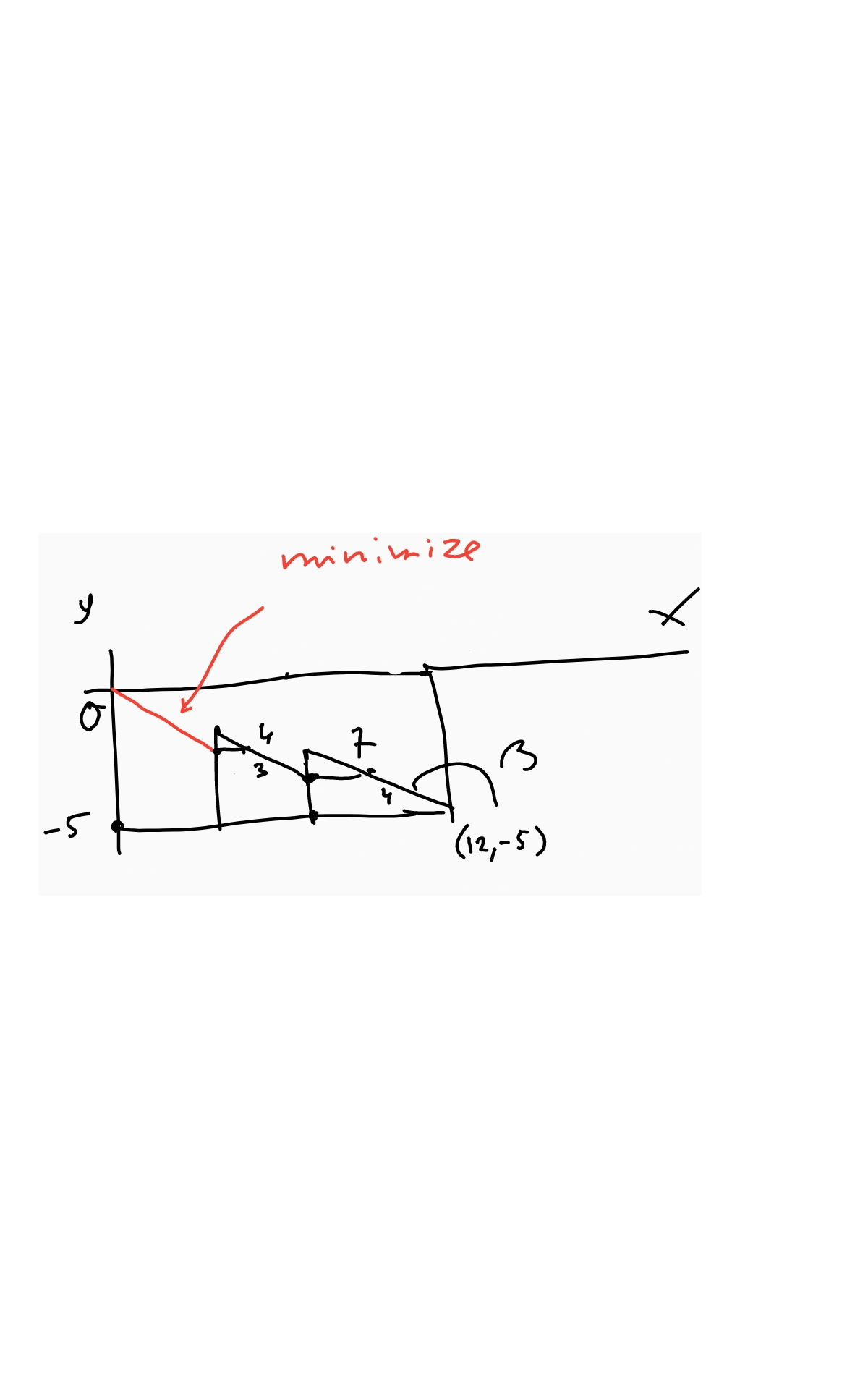This section requires Javascript.
You are seeing this because something didn't load right. We suggest you, (a) try
refreshing the page, (b) enabling javascript if it is disabled on your browser and,
finally, (c)
loading the
non-javascript version of this page
. We're sorry about the hassle.
For f ( α , β ) = ( 1 2 + 4 cos α + 7 cos β ) 2 + ( − 5 + 3 sin α + 4 sin β ) 2 we derive ∂ α ∂ f = − 8 ( 1 2 + 4 cos α + 7 cos β ) sin α + 6 ( − 5 + 3 sin α + 4 sin β ) cos α ∂ β ∂ f = − 1 4 ( 1 2 + 4 cos α + 7 cos β ) sin β + 8 ( − 5 + 3 sin α + 4 sin β ) cos β By setting ∂ α ∂ f = 0 we find 8 ( 1 2 + 4 cos α + 7 cos β ) sin α = 6 ( − 5 + 3 sin α + 4 sin β ) cos α so that tan α = cos α sin α = 4 3 × ( 1 2 + 4 cos α + 7 cos β ) ( − 5 + 3 sin α + 4 sin β ) Also, by setting and ∂ β ∂ f = 0 1 4 ( 1 2 + 4 cos α + 7 cos β ) sin β = 8 ( − 5 + 3 sin α + 4 sin β ) cos β so that tan β = cos β sin β = 7 4 × ( 1 2 + 4 cos α + 7 cos β ) ( − 5 + 3 sin α + 4 sin β ) Combining these, we find
tan β = 2 1 1 6 tan α From a graphical representation (see below) it is clear that both α and β must be in the 2nd quadrant, so we can set β = π + arctan ( 2 1 1 6 tan α ) and from there express all trig expressions in terms of α.
This way the problem reduces to its single-variable version, which greatly reduces the effort. Putting the formulas in Excel it was easy to search for a value of α for which ∂ α ∂ f was as close to 0 as possible. We find α ≈ 2 . 5 9 8 8 8 9 5 2 1 radians, and f ( α ) ≈ 8 . 0 7 2 4 7 5 6 1